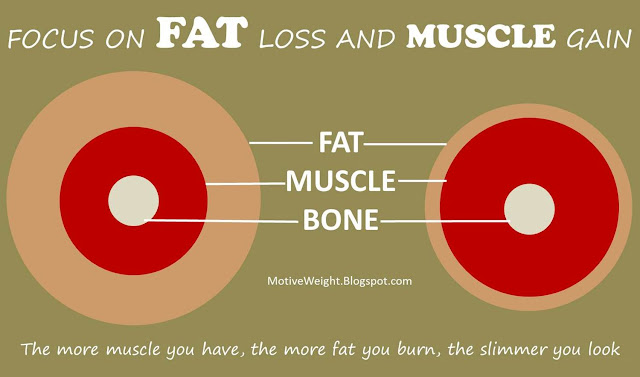1. Focus on the Positive
If you think you will fail at you exercise / weight loss goals then you will fail because you will end up giving up too easily. If you focus on attaining your goals and WHY you want to attain them then you will stay positive and stay motivated.
We all have qualities that we like about ourselves and things that could use improvement. When we're having a bad day it's important to not dwell on why we're having a challenging time. Remember that a lot of this little stuff is meaningless and there is no point stressing about little details. Focus on the big picture and work on improving yourself to the ultimate goal.
Example: "I may not exercise a lot, but at least I am exercising daily. I just need to stay focused and ty to up the ante on my daily routine."
We all have qualities that we like about ourselves and things that could use improvement. When we're having a bad day it's important to not dwell on why we're having a challenging time. Remember that a lot of this little stuff is meaningless and there is no point stressing about little details. Focus on the big picture and work on improving yourself to the ultimate goal.
Example: "I may not exercise a lot, but at least I am exercising daily. I just need to stay focused and ty to up the ante on my daily routine."
When you are going through a period of low motivation you need to keep your
goals close by so you are feeling constantly motivated. This could be simply an image of the ideal body on your fridge or a list of
habits that you want to achieve, a picture of yourself when you were 17, or a note that we carry
around. Could even be poetry or a movie that you like to see again and again.
Example: For me that would be Rocky (all of the films), plus I have all the music from the Rocky films which I like to listen to while exercising.
When people are feeling depressed and unmotivated they have a tendency to eat junk food. So here's an important tip: Never go grocery shopping when you are depressed and feeling negative!
Example: For me that would be Rocky (all of the films), plus I have all the music from the Rocky films which I like to listen to while exercising.
When people are feeling depressed and unmotivated they have a tendency to eat junk food. So here's an important tip: Never go grocery shopping when you are depressed and feeling negative!
3. Celebrate Progress in a Smart Way
People love reward systems.
But don't reward yourself with fatty food by suddenly binging whenever you lose 5 lbs. That puts you in danger of a yo-yo diet.
If you're always achieving success but never offering yourself breaks and rewards the effort can begin to seem never ending!
D) Sex! Your lover will be appreciative of your efforts!
What is the point of working your buns off if you're always living within the confines of a strict regime and don't reward yourself!
If you're feeling the rewards you will also be feeling positive and motivated to keep at it!
But don't reward yourself with fatty food by suddenly binging whenever you lose 5 lbs. That puts you in danger of a yo-yo diet.
If you're always achieving success but never offering yourself breaks and rewards the effort can begin to seem never ending!
Healthy Ways to Reward Yourself
A) Go out for a movie by yourself or with friends.
B) Go shopping for shoes, power tools, electronic gadgets or whatever makes you happy.
C) Take a day off to make artwork, poetry or listen to music.
What is the point of working your buns off if you're always living within the confines of a strict regime and don't reward yourself!
If you're feeling the rewards you will also be feeling positive and motivated to keep at it!





























































